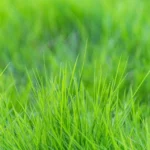
Thyme is an herb that belongs to the mint family Lamiaceae. There are around 350 species of thyme native to Europe, Asia and Africa. Thyme prefers sunny locations and well-drained soils. It can endure frost and drought. The flavor and medicinal properties of thyme have been known to humans for at least a few thousand years. Today thyme is grown mainly as a spice and as an ornamental plant. Essential oils extracted from leaves and flowers are used in the chemical industry to make hand disinfectants and in the perfume industry. Thyme is also widely used in the treatment of numerous medical conditions.
Thyme has narrow, grey to green stem covered with hairs. It can reach 16 inches in height.
Ancient Egyptians used to use the spice during the mummification process. It was also placed in coffins for passage to the next worlds.
Thyme is evergreen plant. It has small, aromatic leaves that are oval in shape. Leaves have whole margin. They are arranged in opposite pairs on the stem.
Thyme was associated with courage since the ancient times, as it was thought to bring strength and bravery.
Thyme produces white, yellow or purple flowers, arranged in dense clusters at the end of the branches.
Ancient Greeks used to sprinkle thyme in their baths.
Flowers contain both male (stamens) and female (pistil) reproductive organs. Honeybees and butterflies are in charge for the pollination of flowers.
The aroma of thyme can also help encourage sleep.
Thyme can be propagated via seed, plant cuttings and parts of the root.
The most common variety of thyme is Thymus vulgaris.
Leaves and flowers are used as spice for soups, stews and sauces. They can be used fresh or dry for dishes made of red meat, chicken, fish and root vegetables.
Thyme is thought to have antibacterial, insecticidal, and possibly antifungal properties.
Thyme was used for the process of mummification in the ancient Egypt.
People used thyme throughout history for embalming and to protect from the Black Death.
Ancient Greeks used thyme as an ingredient of baths because of the beautiful aroma of this plant. Scent of burned thyme was used as freshener of temples.
Forms of thyme include fresh and dried herbs and essential oil.
Bravest knights were wearing scarves embroidered with thyme as a symbol of courage during the medieval times.
Researchers at the University of Belgrade, Serbia, found that an aqueous extract obtained from wild thyme reduced blood pressure in tests on rats.
Leaves and flowers of thyme were used to protect against nightmares in the past. People believed that placing of thyme under the pillow ensures pleasant dreams.
A Polish study tested thyme oil and lavender oil, and they that observed that thyme oil was effective against resistant strains of Staphylococcus, Enterococcus, Escherichia and Pseudomonas bacteria.
Thyme was also part of funeral rituals in the past. Coffin filled with thyme was a guarantee for safe and successful passage to the next life.
A study carried out in Lisbon, Portugal, found that extracts of mastic thyme might protect people from colon cancers.
Hymettus honey is special type of honey made from the pollen and nectar collected from thymes that grow on the Mount Hymettus in Greece.
Researchers at the University of Turin, Italy, found that essential oil of thyme significantly enhanced the destruction of the C. albicans fungus in the human body.
Essential oils extracted from the leaves and flowers contain substance called thymol. This substance has antiseptic properties. Thymol is active ingredient in the popular mouthwashes such as Listerine.
Thyme plants generally grow from 15 to 40 cm (6 to 16 inches) tall and have white, purple or yellow flowers depending on the species.
Thyme was used for soothing of the wounds and for the prevention of infections in the past. It was also used in a treatment of cough, congestion, stomach pain and gout.
Dried thyme is very high in vitamin K and high in manganese and iron, while the fresh version contains significant quantities of vitamin C and A, iron and manganese.
Latest medical studies revealed that thyme can be used in a treatment of bronchitis, fungal infections and skin disorders (acne). Thyme is usually applied in the form of tea or ointments.
The extracted oil of thyme, contains large quantities of thymol, that has antiseptic qualities, that is included in some medical and health products, and the herb can be used to treat bronchitis.
Thyme is perennial plant which means that it can survive more than two years in the wild.









